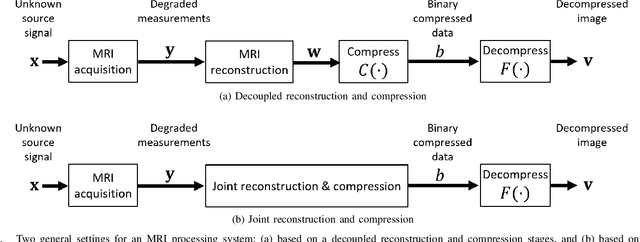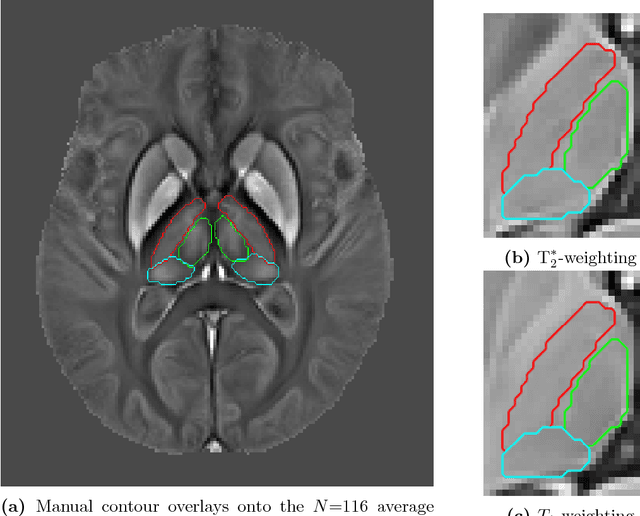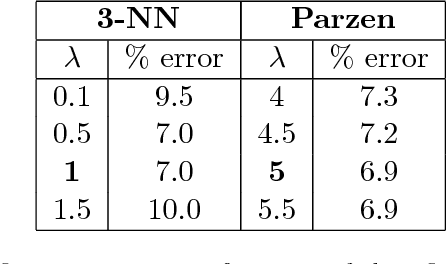Veronica Corona
Regularized Compression of MRI Data: Modular Optimization of Joint Reconstruction and Coding
Oct 08, 2020



Abstract:The Magnetic Resonance Imaging (MRI) processing chain starts with a critical acquisition stage that provides raw data for reconstruction of images for medical diagnosis. This flow usually includes a near-lossless data compression stage that enables digital storage and/or transmission in binary formats. In this work we propose a framework for joint optimization of the MRI reconstruction and lossy compression, producing compressed representations of medical images that achieve improved trade-offs between quality and bit-rate. Moreover, we demonstrate that lossy compression can even improve the reconstruction quality compared to settings based on lossless compression. Our method has a modular optimization structure, implemented using the alternating direction method of multipliers (ADMM) technique and the state-of-the-art image compression technique (BPG) as a black-box module iteratively applied. This establishes a medical data compression approach compatible with a lossy compression standard of choice. A main novelty of the proposed algorithm is in the total-variation regularization added to the modular compression process, leading to decompressed images of higher quality without any additional processing at/after the decompression stage. Our experiments show that our regularization-based approach for joint MRI reconstruction and compression often achieves significant PSNR gains between 4 to 9 dB at high bit-rates compared to non-regularized solutions of the joint task. Compared to regularization-based solutions, our optimization method provides PSNR gains between 0.5 to 1 dB at high bit-rates, which is the range of interest for medical image compression.
A multi-contrast MRI approach to thalamus segmentation
Jul 27, 2018



Abstract:Thalamic alterations are relevant to many neurological disorders including Alzheimer's disease, Parkinson's disease and multiple sclerosis. Routine interventions to improve symptom severity in movement disorders, for example, often consist of surgery or deep brain stimulation to diencephalic nuclei. Therefore, accurate delineation of grey matter thalamic subregions is of the upmost clinical importance. MRI is highly appropriate for structural segmentation as it provides different views of the anatomy from a single scanning session. Though with several contrasts potentially available, it is also of increasing importance to develop new image segmentation techniques that can operate multi-spectrally. We hereby propose a new segmentation method for use with multi-modality data, which we evaluated for automated segmentation of major thalamic subnuclear groups using T1-, T2*-weighted and quantitative susceptibility mapping (QSM) information. The proposed method consists of four steps: highly iterative image co-registration, manual segmentation on the average training-data template, supervised learning for pattern recognition, and a final convex optimisation step imposing further spatial constraints to refine the solution. This led to solutions in greater agreement with manual segmentation than the standard Morel atlas based approach. Furthermore, we show that the multi-contrast approach boosts segmentation performances. We then investigated whether prior knowledge using the training-template contours could further improve convex segmentation accuracy and robustness, which led to highly precise multi-contrast segmentations in single subjects. This approach can be extended to most 3D imaging data types and any region of interest discernible in single scans or multi-subject templates.
 Add to Chrome
Add to Chrome Add to Firefox
Add to Firefox Add to Edge
Add to Edge